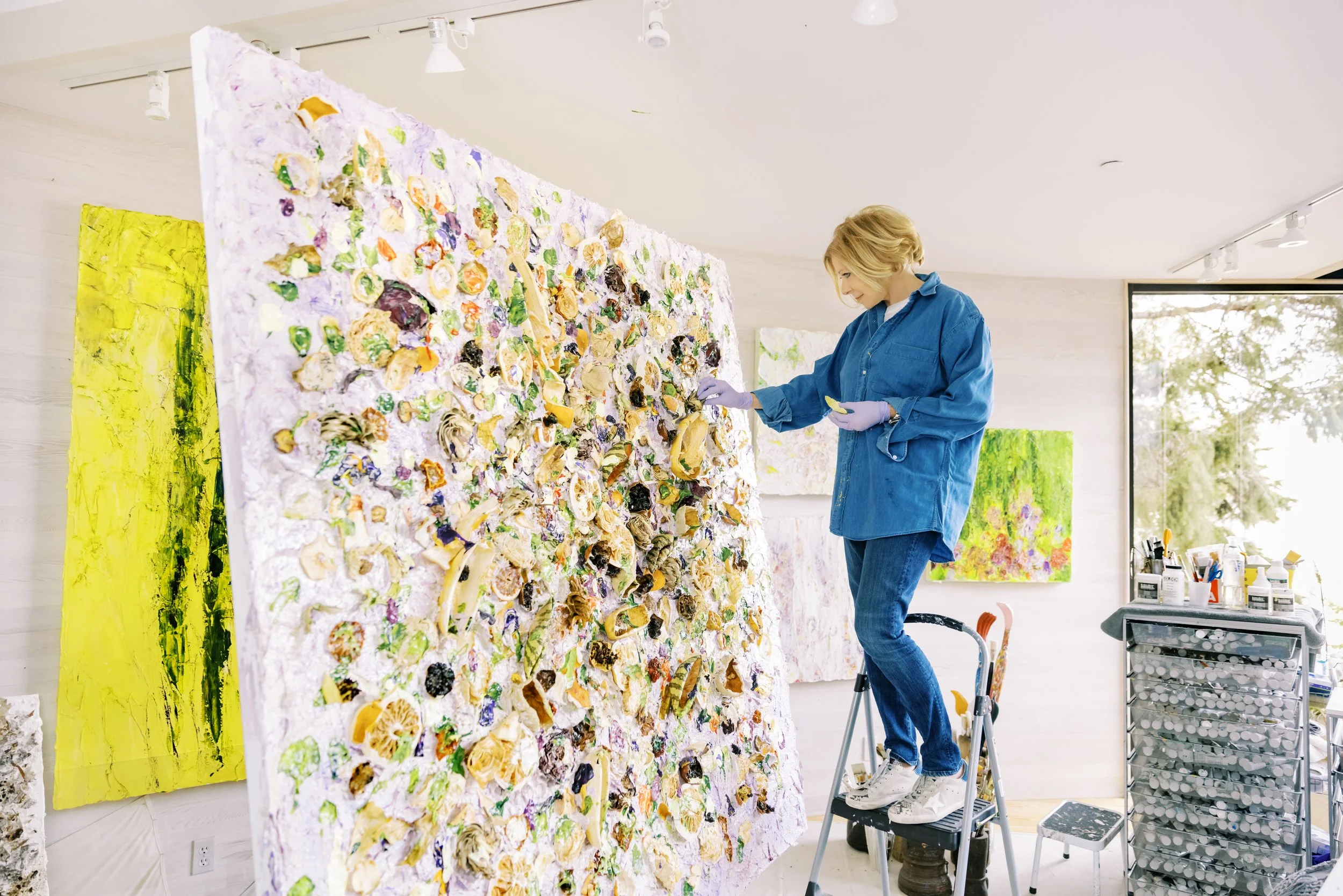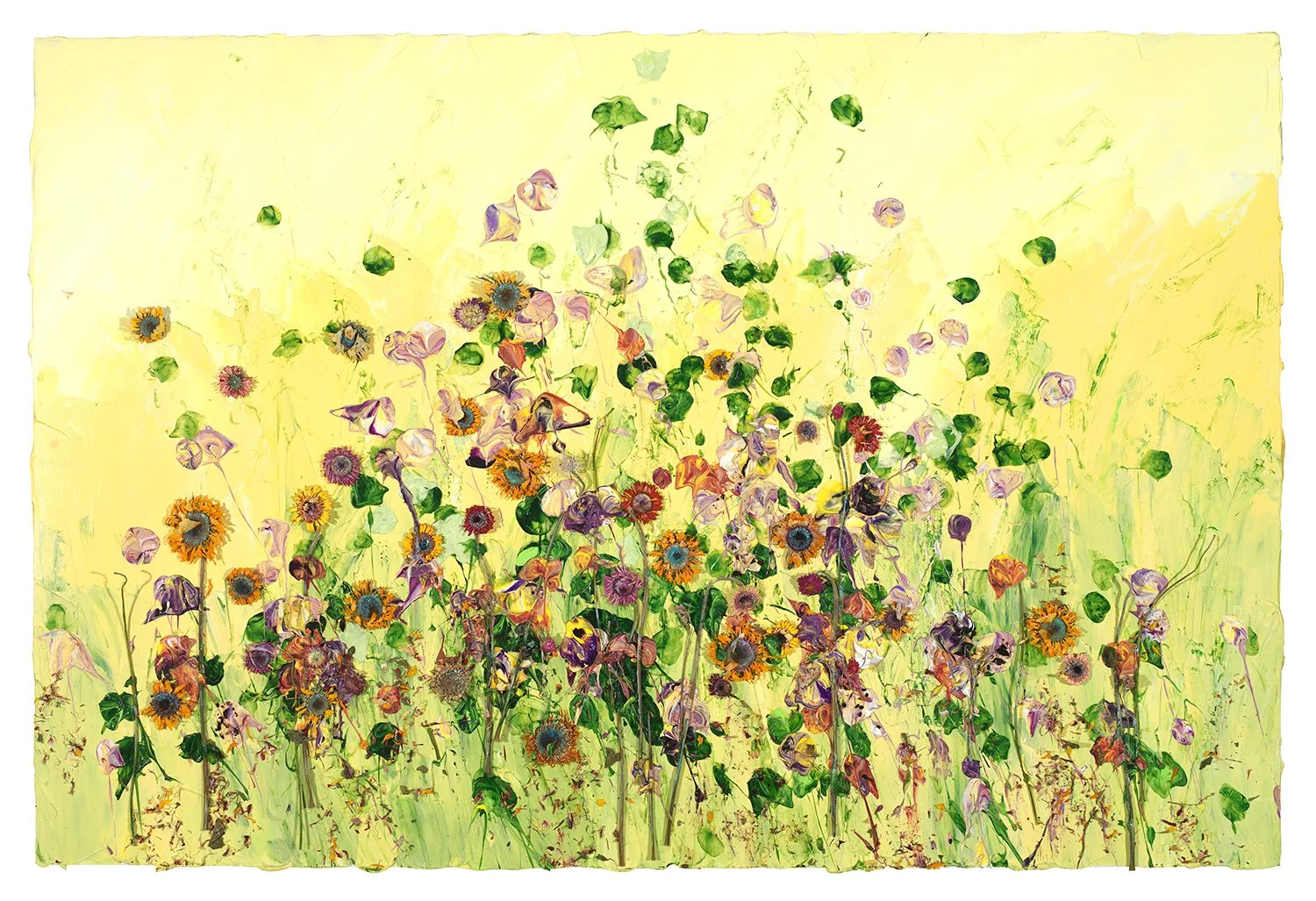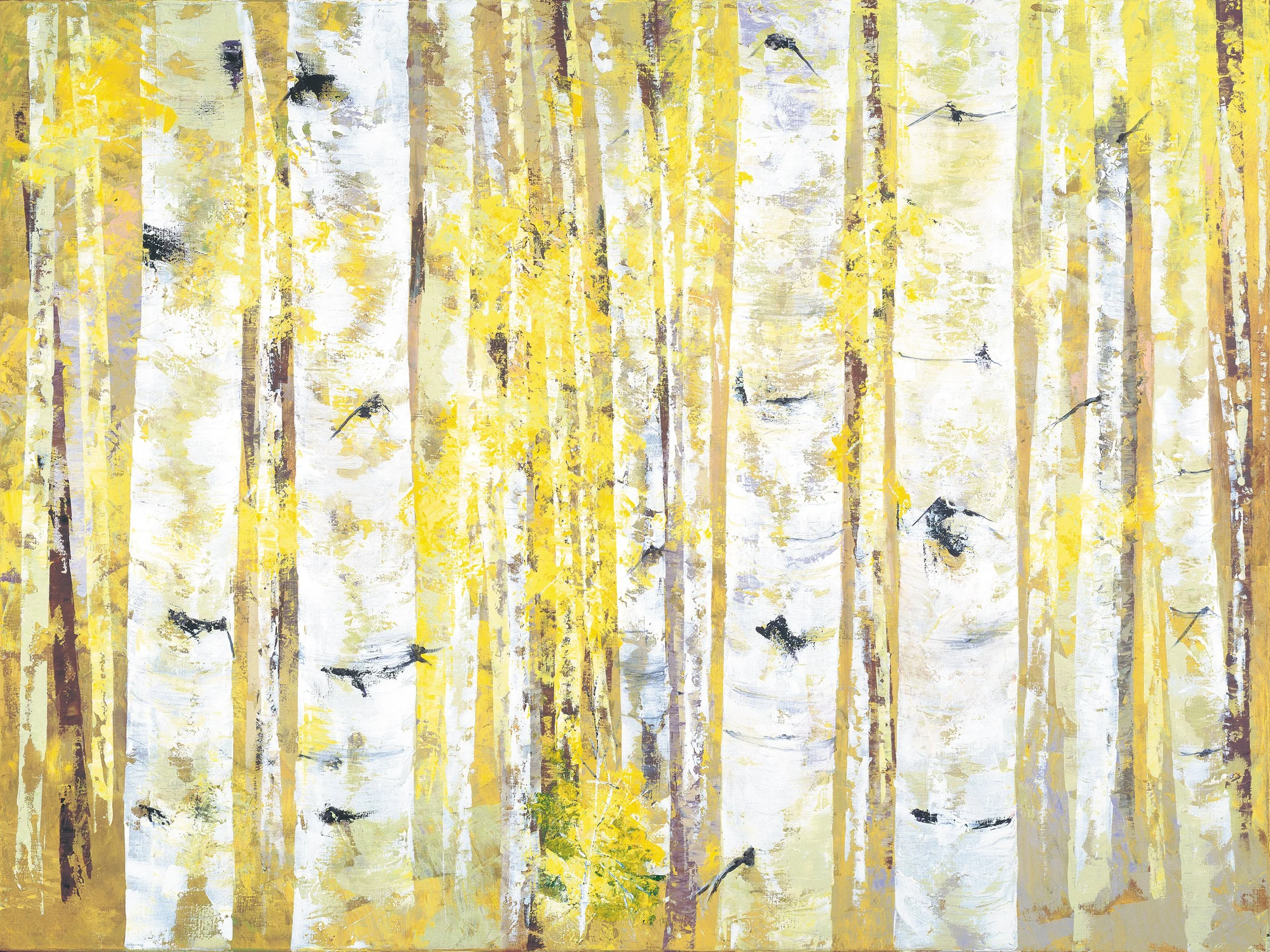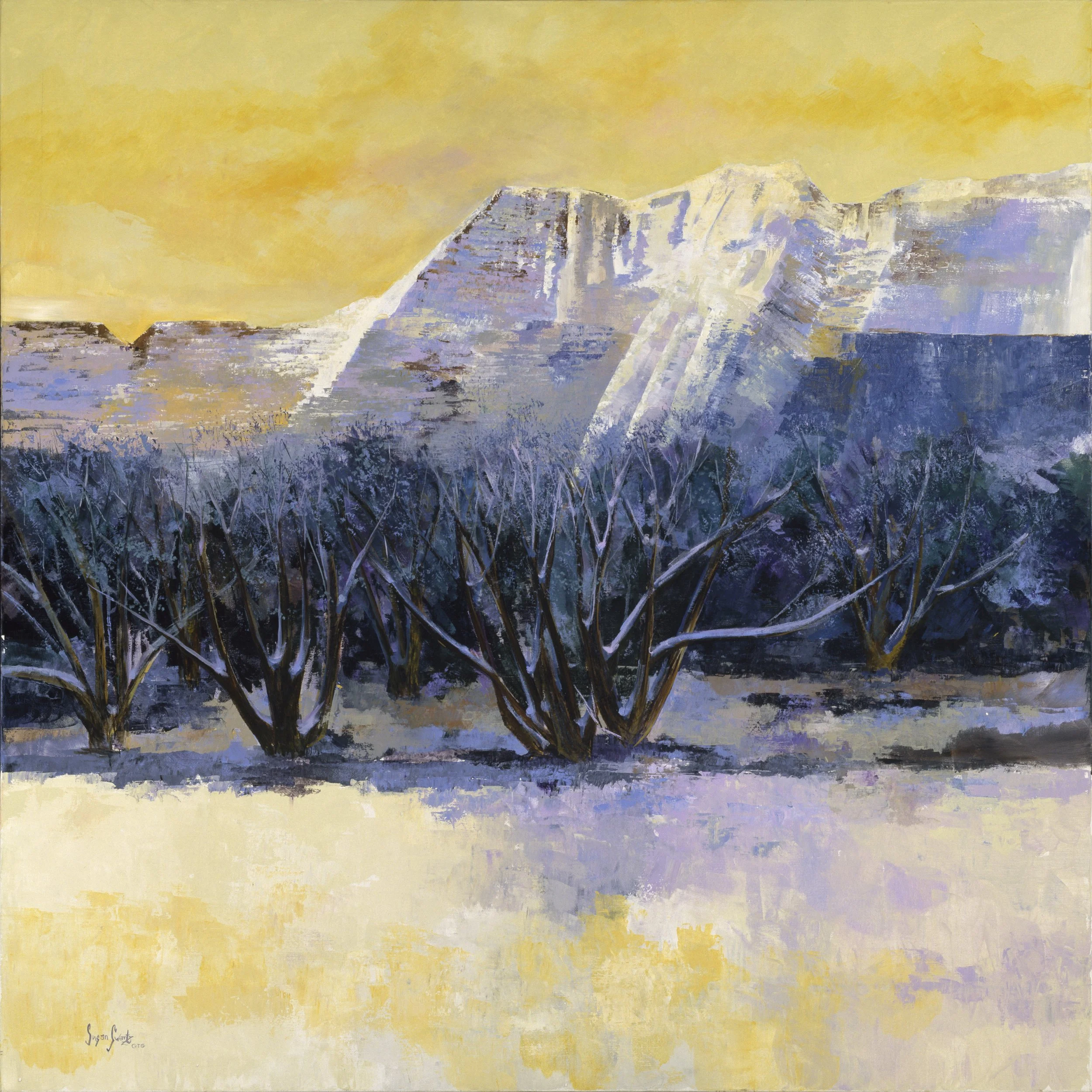The Village Sun: Art and Grace—Susan Swartz Comes to Soho
Susan Swartz working in the studio in Park City, Utah. In New York, she is represented by Georges Bergés Gallery which also represents the art of Hunter Biden.
May 15, 2024
By Stephen DiLauro
Susan Swartz is feeling blessed, and Georges Bergés is one immediate reason why. When Swartz’s 57th Street art dealer announced the closure of his gallery, the painter was unsure what her next step would be. Meanwhile, Bergés—the Soho gallerist who is widely viewed as a leader among the next generation of top art dealers—went to work. He wanted an introduction to Swartz.
“I love what I do,” Bergés told me. “But I have three prerequisites: I must love the work; I must believe I can sell the work; and, third, I have to like the artist as a person. If any of those three elements are missing, it becomes too much like a real job.”
Sunflowers 16, Acrylic on linen, 48 x 72 in.
Their mutual friend Toni Bloomberg brought them together. Bloomberg and her late husband John built a substantial collection of Impressionist, Post-Impressionist and American art. Their collection is bequeathed to the San Diego Art Museum.
“I’ve admired Susan’s work for years,” Bloomberg said. “I never thought she had the proper representation. She’s been a friend of mine for years and years. I don’t collect contemporary art, so I don’t know that many people. Who is there other than Gagosian and Georges Bergés?”
Swartz and Bergés hit it off.
Swartz, who creates stunning nature paintings, was pleased. Bergés’ West Broadway gallery gets a lot of attention, and attention is no stranger in Swartz’s life. She and her husband founded the Oscar-and Emmy-winning documentary production company Impact Partners (impactpartnersfilm.com) which funds and develops powerful documentary storytelling.
I asked her if filmmaking in any way affected her painting.
“I think the biggest thing is being around people with a real passion for what they do,” she said. “I love that energy.”
Inner Silence, Acrylic on linen, 36 x 46 in.
One of those passionate filmmakers is Louie Schwartzberg, who did a seven-minute video that explores the evolution of Swartz’s painting from a purely realistic approach to her current efforts, which present nature through an expressive, abstract lens. The video can be viewed on susanswartz.com.
Louie Schwartzberg is likely best known for his documentary “Fantastic Fungi,” which is a delightful exploration of the power, healing and joy that mushrooms can bring to peoples lives. Swartz’s Impact Partners produced “Fantastic Fungi,” as well as another mycelium-influenced documnetary: “The Truffle Hunters,” follows some elderly Italian foragers in their native Piedmont and their truffle-locating dogs. I thoroughly enjoyed both films—before knowing about Swartz’s connection.
Swartz and Impact Partners have produced nearly 150 documentaries. A scroll through the titles on the website reveals that the company is responsible for some of the most well-known and widely watched documentaries of the last decade.
“I’m often described as an environmental artist and that is an honor, but it is not a political stance for me,” Swartz said. “I seek to pay tribute to nature by painting the world as it is meant to be, so that we are inspired to protect it and take care of it. I also have a dedication to support documentary filmmakers who are equally driven to tell their stories and share their message for the benefit of social change.”
Nature’s Bouquet 80, Acrylic on linen, 36 x 60 in.
Swartz first came to the fore as an artist in Europe, where the German art impresario and curator Walter Smerling saw her work and began to champion it. He soon arranged musueum and gallery exhibitions in Bonn, Koblenz, Berlin, Salzburg (Austria), Budapest (Hungary), St. Petersburg (Russia), Beijing, China, and elsewhere.
“I am blessed that Walter took an interest in my painting,” she said.
After several exhibitions in Manhattan and elsewhere in the USA, Swartz finds herself preparing for a solo exhibition in Soho.
“Susan’s voice is an important one. I see her paintings as totems of hope contributing profoundly to the experiential journey that makes up the human experience,” Georges Bergés said. “Her use of color, texture, and motion combine to create an experience unique to Susan Swartz. Great art is expansive—it opens us up so that we cna feel and give more of what’s best in us. Her work is unforgettable because it carries an authenticity, sadly rare in modern life.”
Susan Swartz is a big supporter of women artists, particularly through the National Museum of Women in the Arts. Swartz’s philanthropic activities extend far beyond the art world, though. She is a longtime supporter of the International Justice Mission which works to end slavery and human trafficking. She also serves on the Dean’s Council at Harvard Divinity School where she was once artist in residence. The Swartz School of Entrepreneurship at Carnegie Mellon was named after her and her husband after they made a $35 million donation.
Soldier Hollow, Acyrlic on linen, 60 x 60 in.
She also founded The Christian Center of Park City in Utah where she maintains her winter studio and a home for her husband Jim, a Silicon Valley venture capitalist, and their children and grandchildren. The Christian Center of Park City is the state’s largest food bank, as well as a social welfare hub.
“The skiing in Park City is a lure for our children and grandchildren,” Swartz told me. “As a painter I have winter light off the snow high in the mountains.” The rest of the year the artist has light off the water on the Eastern Seaboard.
Several years ago, Swartz was hit with the double whammy of two environmental diseases at once—mercury poisoning and Lyme disease. She came through this trial, and on the other side of healing she discovered the urge to abstraction.
“I paint nature as God created it—full of beauty and light,” she said.
Her current output evolved from “total realism” to the bright, color-laden expressionistic and layered canvases of today. There is a truly potent beauty in these new works.
As she puts it, “Good things can come out of bad.”
The world today needs all the healing from art, beauty, and nature that it can get.”
For more information, please visit susanswartz.com and bergesgallery.com.
DiLauro is a playwright, poet, and roving culture writer. See the article here.





